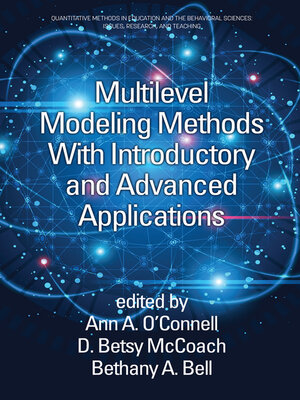Multilevel Modeling Methods with Introductory and Advanced Applications
ebook ∣ Quantitative Methods in Education and the Behavioral Sciences: Issues, Research, and Teaching
By Ann A. O'Connell

Sign up to save your library
With an OverDrive account, you can save your favorite libraries for at-a-glance information about availability. Find out more about OverDrive accounts.
Find this title in Libby, the library reading app by OverDrive.



Search for a digital library with this title
Title found at these libraries:
| Loading... |
Multilevel Modeling Methods with Introductory and Advanced Applications provides a cogent and comprehensive introduction to the area of multilevel modeling for methodological and applied researchers as well as advanced graduate students. The book is designed to be able to serve as a textbook for a one or two semester course in multilevel modeling. The topics of the seventeen chapters range from basic to advanced, yet each chapter is designed to be able to stand alone as an instructional unit on its respective topic, with an emphasis on application and interpretation.In addition to covering foundational topics on the use of multilevel models for organizational and longitudinal research, the book includes chapters on more advanced extensions and applications, such as cross-classified random effects models, non-linear growth models, mixed effects location scale models, logistic, ordinal, and Poisson models, and multilevel mediation. In addition, the volume includes chapters addressing some of the most important design and analytic issues including missing data, power analyses, causal inference, model fit, and measurement issues. Finally, the volume includes chapters addressing special topics such as using large-scale complex sample datasets, and reporting the results of multilevel designs.Each chapter contains a section called Try This!, which poses a structured data problem for the reader. We have linked our book to a website containing data for the Try This! section, creating an opportunity for readers to learn by doing. The inclusion of the Try This! problems, data, and sample code eases the burden for instructors, who must continually search for class examples and homework problems. In addition, each chapter provides recommendations for additional methodological and applied readings.







